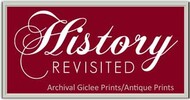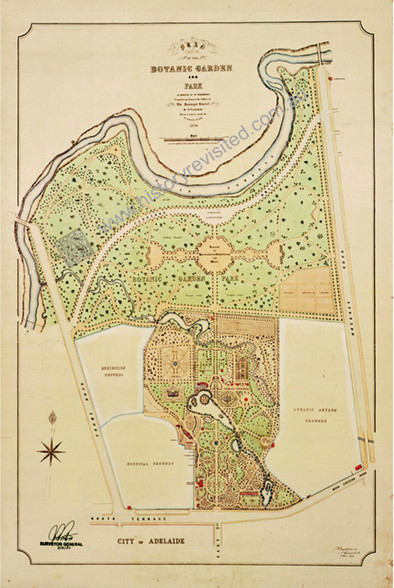 Loading... Please wait...
Loading... Please wait...All prices are in All prices are in NZD
Categories
- Home
- Giclee Prints
- Giclee, Adelaide, Botanic Gardens, Park, 1874, Schomburgk
- Home
- Giclee Prints
- Botany
- Giclee, Adelaide, Botanic Gardens, Park, 1874, Schomburgk
- Home
- Giclee Prints
- Maps and Charts
- Giclee, Adelaide, Botanic Gardens, Park, 1874, Schomburgk
- Home
- Giclee Prints
- South Australian Scenes
- Giclee, Adelaide, Botanic Gardens, Park, 1874, Schomburgk
- Home
- Giclee Prints
- Maps and Charts
- Australia-Asia-Pacific
- Giclee, Adelaide, Botanic Gardens, Park, 1874, Schomburgk
- Home
- Giclee Prints
- Sport
- Giclee, Adelaide, Botanic Gardens, Park, 1874, Schomburgk
Product Description
Giclee, Botany, Sport, Colonial, South Australia, limited edition, archival, Adelaide Botanic Gardens & Park, 1874, Schomburgk, croquet lawns, archery, Col William Light
“Plan of the Botanic Garden and Park as designed by Dr. Schomburgk”
When first published, this garden design was compiled and drawn at the "Office of the Surveyor General By E. P Laurie From a survey by Master Surveyor J.W. Jones, Surveyor General’s Office, Adelaide. Frazer S. Crawford Photo-lithographer, 1874."
Size of image 59 x 39cm (23 1/2 x 15 1/2 inch)
Archival Limited Edition Certificate issued /300
Description : Map of Adelaide Botanic Garden and Park with a birds-eye view of it many contemporary features, within the boundaries of the River Torrens, Hackney Road, North Terrace and Frome Road. Some remain today, like the Directors Residence, where Dr Richard Schomburgk lived, the Head Gardner's Cottage & the proposed site for the Palm House. Other features of note were the reserve for horticultural exhibitions & music, Orangery, Experimental Garden, Victoria Regis House, original Rosery, bird aviaries, animal enclosures (before the zoo), Aquarium, Croquet Lawn, Archery Range, avenue for Monocotyledons /Dicotyledons, Medicinal Garden, Diana's Island, complete with impressive sculpture, within the original lake, resplendent fountains, and more. It also shows the proximity to the Hospital grounds & Lunatic Asylum Grounds (where the National Wine Center is located today). The South Australia Company's Mill was located on Hackney Road, where currently the Hackney Hotel operates. Perhaps the SA Mill was included to illustrate the economic success of the grain growers, helped along by the active research by Schomburgk's botanic Antipodean institution.
Value of Botanical Garden - Social Benefit & Scientific Institution.
South Australia Act was passed in London in 1834 with the Colony being proclaimed by Governor John Hindmarsh in December 28, 1836. Surveyor Colonel William Light unveiled his Plan of the Adelaide in 1837. Light had envisaged a Botanical Garden to be in the west Parklands while completing the town survey of Adelaide, and later the District Blocks of the surrounding land. The survey's arrival in London in 1837, it therefore had all the features of "A Slice of London in the Antipodes" to be either sold directly off the plan or later at on-site land auctions, to prospective investors and settlers in England. In London, Royal Parks and Gardens were a celebrated contributor to London’s landscape. Botanical Gardens, like Kew Gardens and the Chelsea Physics Gardens, were vital to study of international botany as botanical specimens returned with celebrated Voyages of Discovery, like that of Captain James Cook & Sir Joseph Banks, and Matthew Flinders' Voyage of scientific discovery 1800-1804. It was in these Botanical Science hubs that the potential for advancing medical science and commercial cropping was investigated and recorded by scientists, artists and printing houses.
Three failed attempts to establish the public garden were thwarted by flooding & lack of funds. The South Australian Agricultural and Horticultural Society was established in 1842 as a matter of urgency. The colonists needed to understand the nature of the land in this alien colonial environment. In 1860 the Botanic Act was passed that included the establishment of a Botanic Garden, Botanic Park, and Adelaide Zoo all evidenced in this 1874 plan. George William Francis was the first Director in 1860, and credited with establishing the Herbarium, Botanical Library and saw the need for a Museum of Botanic Economy like that established in London's Kew Gardens. When Dr Richard Schomburgk took over in in 1865, it was he who first saw the necessity of setting up forest reserves to preserve the already threatened local flora. This work was carried on by John Edne Brown, published "Forest Flora of South Australia" 1882-1890, relying heavily on the botanical services offered by the Botanical Gardens. It was Schomburgk that established the Museum of Economic Botany as we see it today in the grounds of the Garden, dedicated to the discovery of "useful plants" to propagate in our challenging soils. I will note here, at the Great Exhibition of 1851, held in the Crystal Palace designed by Joseph Paxton, that the South Australian exhibit displayed wheat from Mount Barker. Only 15 years after settlement that wheat won the gold medal for "Best Wheat in the World".
Colonial Garden Sports
Archery is linked to Colonel William Light who was a keen proficient of the sport, arriving in the new Colony with two long bows & "many sets of arrows". Although there seems to be no formal archery Club until 1850, it is noted that the original plan of Adelaide had reserved land for that purpose in the Parklands. Members of this Archery Club were to become Australian, Olympic and World Championship holders for South Australia.
Garden Croquet. Formerly known as the "Police Paddock", on account of the proximity to the Mounted Police Barracks (remnants can still be seen behind the Museum on North Terrace), in 1973 Schomburgk assigned newly allocated land to the Promenade and the Croquet Lawns. Garden Croquet was popular in Britain, and proved a leisurely activity among the colonists. This pass-time was basically balls hit with mallets through hoops laid out in a sequence laid out like billiards. It was to be elevated to an Olympic sport when held in Paris in 1900.
John Stevens & the South Australia Company Mill
 On a personal note, I am thrilled to see the inclusion of the SA Company's Mill on this map located in the upper right on the River Torrens, just across from the Botanic Gardens.It was removed in the 1970s and is now "Old Mill Reserve". Park Farm was also part of the Mill, and is remembered on a metal sign closer to the river bank. My great great grandfather, John Stevens, leased the mill in the Late 1840s through to his death in 1871. There were many grain mills in Adelaide due to the early success in agrarian farming. The fluctuating price of grain, drought & inter colonial mining discoveries, caused great highs and lows in local markets. However, "Who dares wins", especially in the colonial era. Turns out it was a great opportunity to be in the milling business, especially after the gold discoveries of the Eastern colonies. Bread was a major staple to any mining community's diet. South Australia's early success in grain growing presented enormous opportunities to a miller who had migrated from the environs of Chichester on Britain's south coast. It also underscores the essential efforts of the Agricultural & Horticultural Society & the efforts of Schomburgk, to match crop to soil types. The fluctuating successes of my ancestor & his sons may have been more dire. He could not escape the impact of, in particular, Victorian gold that was to rob the smaller colony of South Australia of its valued free labor. However, like the Chinese tariffs placed on Australian agricultural and mining exports in 2020-21, John Stevens found other opportunities, intercontinental markets & trade with Valparaiso in Chile. If the valuable labor was leaving the colony, John Stevens, his sons & partners, exploited an advantage of the emerging riverboat trade, taken up by Captain William Randell & cohorts. The opportunity to trade with neighboring colonies on the Murray River to send South Australian flour, & contraband liquor it seems, answered the customer need. It would have been a modern-day "Pop-up Shop" by river. Another customer demand may have been smuggling Chinese migrants to the gold fields, as a quota had been placed on entry from Victorian coastal ports. Interesting times indeed.
On a personal note, I am thrilled to see the inclusion of the SA Company's Mill on this map located in the upper right on the River Torrens, just across from the Botanic Gardens.It was removed in the 1970s and is now "Old Mill Reserve". Park Farm was also part of the Mill, and is remembered on a metal sign closer to the river bank. My great great grandfather, John Stevens, leased the mill in the Late 1840s through to his death in 1871. There were many grain mills in Adelaide due to the early success in agrarian farming. The fluctuating price of grain, drought & inter colonial mining discoveries, caused great highs and lows in local markets. However, "Who dares wins", especially in the colonial era. Turns out it was a great opportunity to be in the milling business, especially after the gold discoveries of the Eastern colonies. Bread was a major staple to any mining community's diet. South Australia's early success in grain growing presented enormous opportunities to a miller who had migrated from the environs of Chichester on Britain's south coast. It also underscores the essential efforts of the Agricultural & Horticultural Society & the efforts of Schomburgk, to match crop to soil types. The fluctuating successes of my ancestor & his sons may have been more dire. He could not escape the impact of, in particular, Victorian gold that was to rob the smaller colony of South Australia of its valued free labor. However, like the Chinese tariffs placed on Australian agricultural and mining exports in 2020-21, John Stevens found other opportunities, intercontinental markets & trade with Valparaiso in Chile. If the valuable labor was leaving the colony, John Stevens, his sons & partners, exploited an advantage of the emerging riverboat trade, taken up by Captain William Randell & cohorts. The opportunity to trade with neighboring colonies on the Murray River to send South Australian flour, & contraband liquor it seems, answered the customer need. It would have been a modern-day "Pop-up Shop" by river. Another customer demand may have been smuggling Chinese migrants to the gold fields, as a quota had been placed on entry from Victorian coastal ports. Interesting times indeed.






















